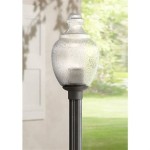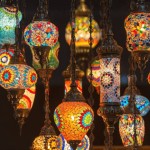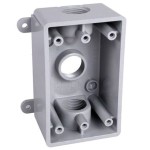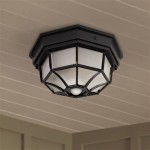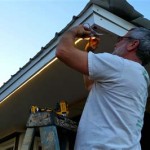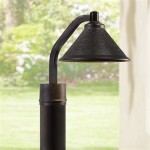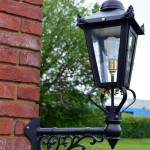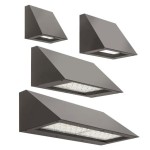What Cable Do You Use For Outdoor Lighting?
Outdoor lighting is a crucial element in enhancing the aesthetic appeal and safety of any property. From illuminating pathways to accentuating landscaping, the right lighting fixtures can transform an outdoor space. However, achieving optimal illumination requires careful consideration of the cable used to connect the fixtures to the power source. Choosing the appropriate cable ensures proper functionality, durability, and safety for your outdoor lighting system.
Understanding Cable Types and Properties
Outdoor lighting cables are typically categorized by their construction, which comprises the conductor material, insulation, and protective layers. Each component plays a vital role in determining the cable's suitability for specific applications. Copper is the most common conductor material due to its excellent conductivity and affordability. However, some cables may utilize aluminum, which offers a lighter weight and higher tensile strength.
Insulation provides electrical isolation and protection against moisture, abrasion, and chemical elements. Common insulation materials include PVC (polyvinyl chloride), XLPE (cross-linked polyethylene), and THHN (thermoplastic high heat-resistant nylon). PVC insulation is cost-effective, but XLPE offers superior resistance to moisture and temperature extremes. THHN is known for its high heat tolerance and is suitable for applications involving significant heat generation.
The outermost protective layers shield the cable from environmental hazards and mechanical stress. This layer can be a simple jacket or an armored sheath. Jackets provide basic protection, while armored sheaths offer enhanced resistance to abrasion, impact, and rodents.
Factors to Consider When Choosing Outdoor Lighting Cable
Several factors influence the choice of cable for outdoor lighting, including:
1. Voltage and Current Requirements
The cable's capacity to handle the voltage and current drawn by the lighting fixtures is essential. Low-voltage systems typically operate at 12 volts, while higher-voltage systems utilize standard household voltage of 120 volts. The cable's ampacity, or current-carrying capacity, should match the total amperage of the connected fixtures. Undersizing the cable can lead to overheating, voltage drops, and potential hazards.
2. Installation Environment
Outdoor lighting cables are exposed to various environmental conditions, such as moisture, sunlight, temperature fluctuations, and potential damage from rodents. Cables with appropriate insulation and protective layers are necessary to withstand these elements. For example, cables buried underground require thicker insulation and protective sheathing to prevent damage and ensure long-term performance.
3. Aesthetics and Visibility
The cable's appearance and visibility can impact the aesthetics of the outdoor space. Some cables are designed for discreet concealment, while others may blend with the environment or even serve as a design element. For instance, cables with low-profile jackets or decorative sheaths can be used to accentuate the lighting fixtures or blend seamlessly with surrounding elements.
4. Safety Considerations
Safety is paramount when installing outdoor lighting systems. Cables should be properly grounded to prevent electrical shock hazards. Additionally, the cable's insulation should be rated for the appropriate voltage and temperature conditions to prevent electrical short circuits and fire hazards. It is crucial to follow local electrical codes and guidelines during installation to ensure compliance and safety.
Recommended Cable Types for Outdoor Lighting
Here are some common cable types suitable for outdoor lighting applications:
1. Direct Burial Cable (DB Cable)
DB cables are specifically designed for underground installation and are typically made with XLPE insulation and an outer jacket resistant to moisture, abrasion, and impact. These cables are ideal for burying in gardens, pathways, and other areas where concealment is required.
2. Armored Cable (AC Cable)
AC cables feature a steel armor surrounding the insulation, offering enhanced protection against damage from rodents, impact, and abrasion. These cables are commonly used for outdoor applications where durability and protection against physical damage are essential.
3. Underground Feeder Cable (UF Cable)
UF cables are suitable for both underground and direct exposure installation. They typically feature XLPE insulation and a moisture-resistant jacket, making them a versatile option for various outdoor lighting projects.
4. Low-Voltage Landscape Lighting Cable
Low-voltage landscape lighting cables are specifically designed for 12-volt systems, offering flexibility and ease of installation. These cables are typically made with smaller diameter copper conductors and a durable PVC insulation. They are ideal for applications where aesthetics and discreet installation are important.
Choosing the right cable for your outdoor lighting system is crucial for achieving optimal performance, safety, and durability. Understanding the various cable types, their properties, and the specific factors influencing your project will ensure you select the perfect cable for your needs.

Using A Cable To Hang String Lights Concord Carpenter

How To Hang Outdoor String Lights And Make Them Look Good Wirecutter
How To Hang Outdoor String Lights Resource Article By Partylights Com

Choosing Low Voltage Lighting Transformers Cable And Wire Connectors In Lite Outdoor

What S The Best Cable To Use For Outdoor Lighting Billyoh Extra
How To Hang Outdoor String Lights Resource Article By Partylights Com

Techmar 15m Main Cable Spt 1 With 6 Connectors

Outdoor Garden Lighting Cable Elluminate

Low Voltage Garden Lights Cable 25m Awg14

12 2 Low Voltage Landscape Lighting Direct Burial Copper Wire Kings Outdoor
Related Posts
